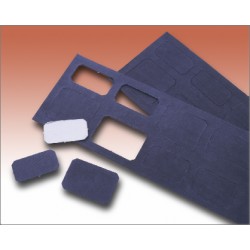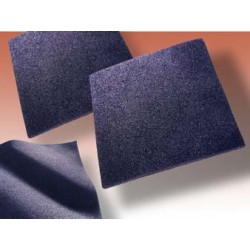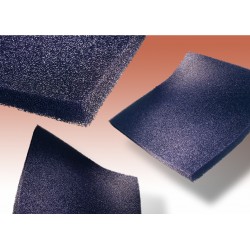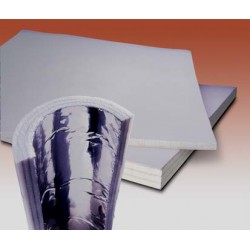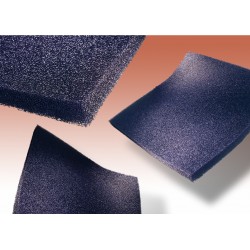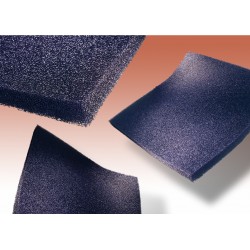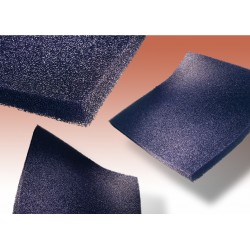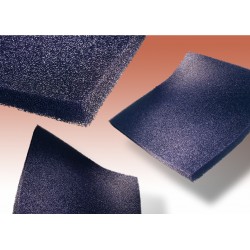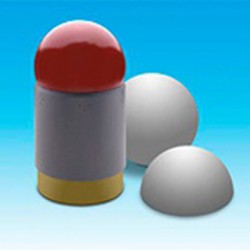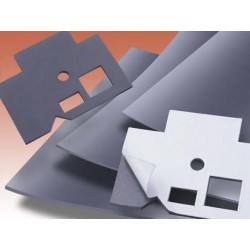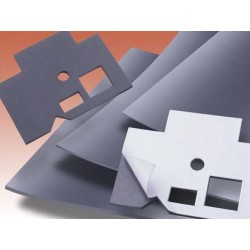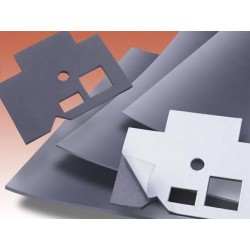No products
Product successfully added to your shopping cart
There are 0 items in your cart. There is 1 item in your cart.
Truncated Pyramidal Microwave Absorber
- EMC Test Equipment
- Transient Generators
- RF Power Amplifiers
- DC - 300 kHz RF Amplifiers
- 10 kHz - 250 MHz RF Amplifiers
- 10 kHz - 400 MHz RF Amplifiers
- 10 kHz - 1 GHz RF Amplifiers
- 80 MHz - 1 GHz RF Amplifiers
- 1 GHz - 2 GHz RF Amplifiers
- 700 MHz - 4.2 GHz RF Amplifiers
- 1 GHz - 6 GHz RF Amplifiers
- 2 GHz - 8 GHz RF Amplifiers
- 6 GHz - 18 GHz RF Amplifiers
- 18 GHz - 40 GHz RF Amplifiers
- Pulse Amplifiers
- RF Field Strength Probes & Meters
- RF Conducted Immunity
- EMC Receivers/EMI Analyzers
- EMC Antennas
- Coupling Decoupling Networks (CDN's)
- Line Impedance Stabilization Networks (LISN's)
- RF Test Equipment
- EMC Probes
- EMC Measurement & Equipment Software
- Power Supplies
- Electrical Safety Analyzers
- High Precision Laboratory Power Analyzers & Meters
- Anechoic Chambers
- Over-the-Air (OTA) Test Chambers
- EMI RF Shielded Tent Enclosures
- RF Shielded Rooms
- EMC Absorber
- Positioning Equipment
- EMC/EMI Test Setup
- GTEM Cells / TEM Cells
- Reverberation Chambers
- Used RF Anechoic Chambers
- EMC Chamber Filters
- EMC Chamber Shielding Gaskets
- RF Shielded Doors
- Anechoic Chamber Accessories
- Fully Anechoic (FAR) Test Chambers
- Manufacturers
- 3ctest
- AE Techron
- AH Systems
- Amplifier Research
- Boonton
- Com-Power
- Diamond Engineering
- EM Test (Ametek CTS)
- EMC Partner
- EMC Test Design
- Empower High Power RF Amplifiers
- ETS-lindgren
- Log Periodic Dipole Array Antenna
- Near Field Probe Sets
- Double Ridge Horn Antennas
- Biconical Antennas
- Quad Ridge Horn Antennas
- Electric Field Probes
- GTEM's
- Positioners & Tripods
- Loop Antennas
- Biconilog Antennas
- LISN's (Line Impedance Stabilization Network)
- Shielded Enclosures/Rooms
- Monopole Antennas
- Field Generating Antennas
- Fischer Custom Communications
- Haefely Hipotronics
- Haefely EFT/Burst Immunity Test Systems
- Haefely Surge Combination Wave Test Systems
- Haefely Surge Damped Oscillating Wave Test Systems
- Haefely Electrostatic Discharge Test Systems (ESD)
- Haefely Surge Ring Wave Test Systems
- Haefely Surge Telecom Wave Test Systems
- Haefely Magnetic Field Test Systems
- Haefely CDN's (Coupling/Decoupling Networks)
- IFI Amplifiers
- Keysight (Agilent)
- MVG - Microwave Vision Group
- PMM / Narda
- Rohde & Schwarz RF Test Equipment
- Rohde & Schwarz Broadband RF Amplifiers
- Rohde & Schwarz Spectrum Analyzers
- Rohde & Schwarz Compliant EMI Test Receivers
- Rohde & Schwarz Isotropic RF Probes
- Rohde & Schwarz RF Signal Generators
- Rohde & Schwarz RF Switches
- Rohde & Schwarz Oscilloscopes
- Rohde & Schwarz RF Power Meters
- Rohde & Schwarz RF Power Sensors
- Schloder
- Schwarzbeck Mess-Elektronik
- Schwarzbeck Antennas
- Schwarzbeck Automotive Antennas
- Schwarzbeck Broadband Horn Antennas
- Schwarzbeck Biconical Antennas
- Schwarzbeck Logarithmic Periodic Broadband Antennas
- Schwarzbeck Stacked Log-Periodic Broadband Antennas
- Schwarzbeck Biconic Log-Periodic Antennas
- Schwarzbeck Dipole Antennas
- Schwarzbeck Rod Antennas
- Schwarbeck Antenna Baluns / Holders
- Schwarzbeck LISN Line Impedance Stabilisation Networks
- Schwarbeck Decoupling & Absorbing Clamps
- Schwarzbeck Field Probes
- Schwarzbeck Helmholtz Coils
- Schwarzbeck Antenna Masts
- Schwarzbeck Coupling/Decoupling Networks
- Schwarzbeck Antennas
- Solar Electronics
- Teseq (Schaffner)
- Teseq Automotive Transient Generators
- Teseq RF Test Equipment
- Teseq EFT/Burst Generators
- Teseq RF Immunity Generators
- Teseq ESD Guns
- Teseq Surge Generators
- Teseq Harmonics & Flicker Solutions
- Teseq Dips, Interrupts & Variations Equipment
- Teseq Ring Wave Generators
- Teseq Oscillatory Waves Generators
- Teseq Absorbing Clamps / Ferrite Tube
- Teseq EMC Antennas
- Teseq Current Probes
- Teseq Coupling Networks
- Thermo Keytek
- Vicreate
- Compliance Standards
- International (IEC/EN)
- EN/IEC 61000-3-2
- EN/IEC 61000-3-3
- IEC 61000-3-11
- IEC / EN 610000-3-12
- EN/IEC 61000-4-2
- EN/IEC 61000-4-3
- EN/IEC 61000-4-4
- EN/IEC 61000-4-5
- EN/IEC 61000-4-6
- EN/IEC 61000-4-7
- EN/IEC 61000-4-8
- EN/IEC 61000-4-9
- EN/IEC 61000-4-10
- EN/IEC 61000-4-11
- EN/IEC 61000-4-12
- EN/IEC 61000-4-16
- EN/IEC 61000-4-18
- EN/IEC 61000-4-19
- EN/IEC 61000-4-20
- EN/IEC 61000-4-21
- EN/IEC 61000-4-29
- EN/IEC 61000-4-31
- IEC 61000-4-39
- EN/IEC 62132
- SEMI F47 Voltage Sag Immunity
- Product Standards
- Military & Aerospace Standards
- Automotive EMC Standards
- CISPR Standards
- Telecom Testing
- ANSI/IEEE Standards
- FCC Part 15
- FCC Part 30
- International (IEC/EN)
- Application/Test Type
- Radiated Immunity
- Bulk Current Injection Testing
- RF Emissions Testing
- Conducted Immunity
- Conducted Emissions
- Antenna Pattern Measurement
- CE Mark Testing
- Intentional Radiator Testing
- Pulsed HIRF Radar
- Over-the-Air (OTA) Testing
- 5G Test Solutions
- Automotive EMC
- SAR Measurement Equipment
- Radiated Emissions
- Battery Simulator Test Equipment
- Services
- Clearance
Viewed products
-

Cuming Microwave C-RAM...
1 - 35 GHz Frequency Range Flexible...
-

AIF-100A Audio...
Primary: Less than 5 Ω Secondary:...
 View larger
View larger Cuming Microwave C-RAM FLX Thin, Flexible, Weatherproof Microwave Absorber
New
- 1 - 35 GHz Frequency Range
- Flexible sheet materials which absorb approximately 99% of incident RF energy at design
- material is weatherproof and will withstand a wide temperature range
- It will conform to complex shapes
- Readily bonded to metal surfaces
- Intended for attachment to aircraft structures, nose cones, ship masts, instrument housings and;
- Other surfaces for the reduction of specular radar reflections
PDF Downloads
Test Equipment Description
C-RAM FLX is a series of flexible sheet materials which absorb approximately 99% of incident RF energy at design frequencies in the range of 1 to 35 GHz. The material is weatherproof and will withstand a wide temperature range. It will conform to complex shapes and is readily bonded to metal surfaces. C-RAM FLX is intended for attachment to aircraft structures, nose cones, ship masts, instrument housings and other surfaces for the reduction of specular radar reflections.
ELASTOMER SELECTION
| SILICONE | |||||||||||||||||||||||||||||||||||||||||||||||||||||||||||||||||||||||||||||||||||||||||||||||||||||||||||||||||||||||||||||
| Typical Hardness-Shore A | 60-70 | ||||||||||||||||||||||||||||||||||||||||||||||||||||||||||||||||||||||||||||||||||||||||||||||||||||||||||||||||||||||||||||
| Temperature Range | -80 to 300 ºF | ||||||||||||||||||||||||||||||||||||||||||||||||||||||||||||||||||||||||||||||||||||||||||||||||||||||||||||||||||||||||||||
| Advantages | Excellent heat resistance, good flexibility at low temperature, excellent ozone and sunlight. | ||||||||||||||||||||||||||||||||||||||||||||||||||||||||||||||||||||||||||||||||||||||||||||||||||||||||||||||||||||||||||||
| Disadvantages | Silicone adhesives are necessary to bond. Fair resistance to solvents, poor abrasion resistance. | ||||||||||||||||||||||||||||||||||||||||||||||||||||||||||||||||||||||||||||||||||||||||||||||||||||||||||||||||||||||||||||
| Typical Use | The elastomer of choice for high and low temperature applications. Silicone finds wide acceptance in electronic housings. | ||||||||||||||||||||||||||||||||||||||||||||||||||||||||||||||||||||||||||||||||||||||||||||||||||||||||||||||||||||||||||||
| URETHANE | |||||||||||||||||||||||||||||||||||||||||||||||||||||||||||||||||||||||||||||||||||||||||||||||||||||||||||||||||||||||||||||
| Typical Hardness Shore A | 80-85 | ||||||||||||||||||||||||||||||||||||||||||||||||||||||||||||||||||||||||||||||||||||||||||||||||||||||||||||||||||||||||||||
| Temperature Range | -80 to 275 ºF | ||||||||||||||||||||||||||||||||||||||||||||||||||||||||||||||||||||||||||||||||||||||||||||||||||||||||||||||||||||||||||||
| Advantages | Excellent abrasion resistance and tear, good weather resistance, excellent tensile strength and elongation. | ||||||||||||||||||||||||||||||||||||||||||||||||||||||||||||||||||||||||||||||||||||||||||||||||||||||||||||||||||||||||||||
| Disadvantages | poor resistance to hot water, acids, and alkalis. | ||||||||||||||||||||||||||||||||||||||||||||||||||||||||||||||||||||||||||||||||||||||||||||||||||||||||||||||||||||||||||||
| Typical Use | Because of its outstanding abrasion resistance urethane is widely used on aircraft. Urethane can be easily bonded with a variety of urethane adhesives. Urethanes are readily painted and accept rain erosions coatings. | ||||||||||||||||||||||||||||||||||||||||||||||||||||||||||||||||||||||||||||||||||||||||||||||||||||||||||||||||||||||||||||
| NEOPRENE | |||||||||||||||||||||||||||||||||||||||||||||||||||||||||||||||||||||||||||||||||||||||||||||||||||||||||||||||||||||||||||||
| Typical Hardness Shore A | 60-80 | ||||||||||||||||||||||||||||||||||||||||||||||||||||||||||||||||||||||||||||||||||||||||||||||||||||||||||||||||||||||||||||
| Temperature Range | -45 to 212 ºF | ||||||||||||||||||||||||||||||||||||||||||||||||||||||||||||||||||||||||||||||||||||||||||||||||||||||||||||||||||||||||||||
| Advantages | Excellent resistance to outdoor exposure, moderate resistance to oil and gas. | ||||||||||||||||||||||||||||||||||||||||||||||||||||||||||||||||||||||||||||||||||||||||||||||||||||||||||||||||||||||||||||
| Disadvantages | limited low temperature flexibility, fair resistance to aromatic and oxygenated solvents. | ||||||||||||||||||||||||||||||||||||||||||||||||||||||||||||||||||||||||||||||||||||||||||||||||||||||||||||||||||||||||||||
| Typical Use | Neoprene elastomers are ideally suited for marine environments. They are easily painted and adhered. They are resistant to stack gas and salt water. | ||||||||||||||||||||||||||||||||||||||||||||||||||||||||||||||||||||||||||||||||||||||||||||||||||||||||||||||||||||||||||||
| TYPICAL PROPERTIES | |||||||||||||||||||||||||||||||||||||||||||||||||||||||||||||||||||||||||||||||||||||||||||||||||||||||||||||||||||||||||||||
| Color | Grey | ||||||||||||||||||||||||||||||||||||||||||||||||||||||||||||||||||||||||||||||||||||||||||||||||||||||||||||||||||||||||||||
| Flammability | non-flammable | ||||||||||||||||||||||||||||||||||||||||||||||||||||||||||||||||||||||||||||||||||||||||||||||||||||||||||||||||||||||||||||
| Reflectivity Performance | <-20 dB at the nominal resonant frequency. Typical performance is shown on reverse. | ||||||||||||||||||||||||||||||||||||||||||||||||||||||||||||||||||||||||||||||||||||||||||||||||||||||||||||||||||||||||||||
| Thickness and weight | |||||||||||||||||||||||||||||||||||||||||||||||||||||||||||||||||||||||||||||||||||||||||||||||||||||||||||||||||||||||||||||
| |||||||||||||||||||||||||||||||||||||||||||||||||||||||||||||||||||||||||||||||||||||||||||||||||||||||||||||||||||||||||||||
METHOD OF APPLICATION
All C-RAM FLX rubber sheets must be in intimate contact with a metal surface for proper resonant behavior.
The normal method of applying C-RAM FLX silicone to a substrate is with a silicone RTV adhesive. For best results, the rubber sheet and the metal should be scuffed with sandpaper, wiped with alcohol to remove dust and grease, and have a silicone primer applied, such as CPRIME 215. The silicone adhesive, such as CBOND 255 or equivalent, is brushed or rolled onto one of the surfaces, and the sheet is then applied to the metal. Overnight cure is generally required, and a modest temperature cycle, such as a few hours at 150 ºF, helps the bond.
Alternately, a silicone caulking tube adhesive can also be used and does not require a primer. Simply apply a thin layer of adhesive, 2 to 4 mils thick, to the rubber sheet and the metal surface, and mate the two together, making sure to work the sheet down from one edge to the other to help prevent air entrapment.
For C-RAM FLX urethane, neoprene, and nitrile, scuff sand the back of the rubber sheet and the metal, and clean with alcohol of lacquer thinner. In certain applications it is good practice to prime the bare metal surface, and bond with a urethane adhesive, silicone adhesive, or neoprene contact adhesive. Temperature and application requirements dictate adhesive choice.
Gap fillers can be provided or recommended from the factory. If the material will see outdoor exposure, Cuming Microwave can recommend applicable paints to maintain microwave performance.
Consult the factory if further detail is required.
C-RAM FLX can also be supplied with a pressure sensitive adhesive backing. While not as strong as liquid adhesives, it will provide an adequate bond in many applications, particularly when one is bonding smaller pieces. Simply peel off the backing, and press the part onto the cleaned substrate surface. If additional bond strength is required, apply the part to a primed surface, and apply heat with a heat gun for 1-2 minutes to effect a good bond.
AVAILABILITY
Standard product sizes for all grades are flat sheets 310 x 310 mm (12 x 12 in) and 400 x 500 mm (16 x 20 in), in the nominal thicknesses given in the above table. Specify the part as C-RAM FLX-xx, where xx is the nominal resonant frequency, and include the dimensions.
Specify a urethane sheet as FLX-U, neoprene as FLX-N. FLX without a suffix designates silicone as a default.
We can supply other dimensions, and can diecut or water-jet parts to your drawings.
C-RAM FLX can also be supplied with a peeland-stick pressure sensitive adhesive backing. Specify by adding a /PSA suffix to the part name. It is also available with a metal foil reflective backing; specify by adding a /MTL suffix.
TYPICAL REFLECTIVITY
The graphs on page 4 show typical reflectivity performance of a few of the grades of C-RAM FLX, expressed as a dB down from metal plate reflection, as a function of frequency. These are measured on NRL near-field type arches.
TYPICAL REFLECTIVITY CURVES OF C-RAM FLX GRADES AT 3, 5, 10, AND 15 GHz.
(all graphs show performance 2-18 GHz; scale is 5 dB/division, with reference at top)
| FLX-3.0 | FLX-5.0 |
 |  |
| FLX-10 | FLX-15 |
 |  |



